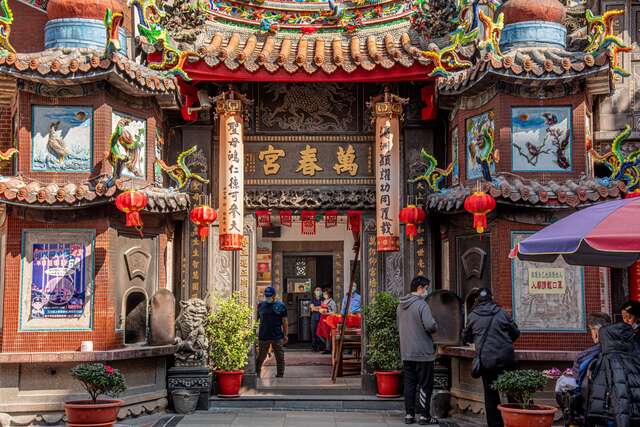Wanchung Temple Introduction
In 1721 (the 60th year of the Kangxi Emperor's reign), the Zhu Yigui incident occurred in Taiwan. General Lan Tingzhen was tasked with suppressing the rebellion, and thus, he personally went to Meizhou's Chaotian Pavilion to respectfully invite the Holy Mother to accompany him on the ship to Taiwan. After arriving in Taiwan, he established the Holy Mother’s worship at the Tainan Grand Mazu Temple. Once the turmoil was settled, the Holy Mother was moved to be worshipped at the Dadu Town shop (the area around Sanmin Road in today's Taichung City), which was named "Lanxing Palace" Mazu Temple. As time passed, the building suffered from weather erosion, and local gentry raised funds for renovation, renaming it Wanchun Palace. It was demolished during the Japanese colonial period but was restored after the end of World War II, striving to return to the solemn and majestic old appearance. In addition to holding the grand celebration ceremony and offering three tributes to Mazu to show gratitude for divine grace, a new entrance “Tianhou Pavilion” archway was built at the temple gate, inscribed with "Entrance of Acquisition,” promoting the belief in Mazu that, beyond the religious nature of revering heaven and fearing deities, the virtues of the believers can also manifest filial piety.











































